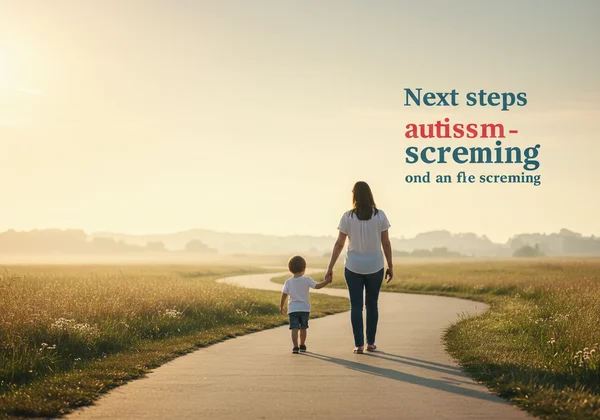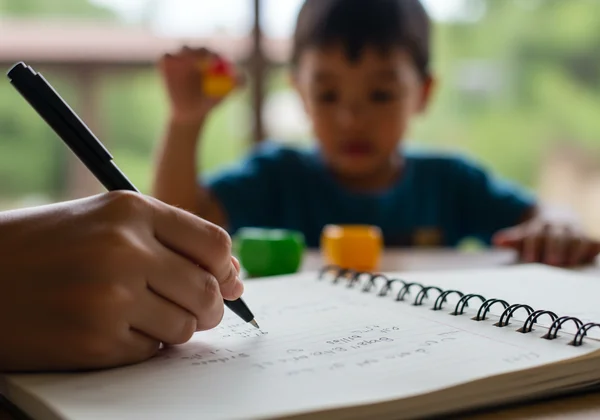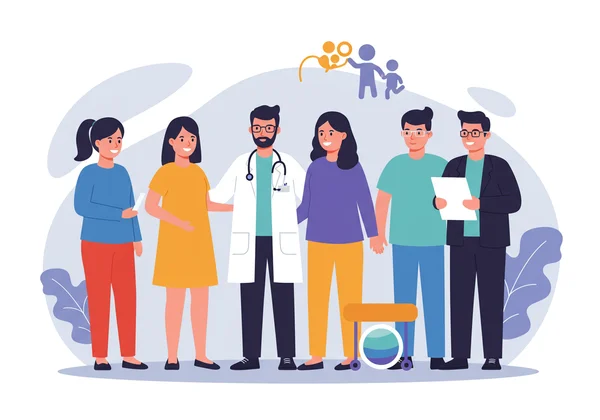Child Autism Spectrum Test: Your Next Steps After Results
Receiving a high score on your child's online autism screener can feel overwhelming. A rush of questions and concerns is completely normal. You've taken a proactive step to understand your child better, and that's the most important thing. This guide is here to transform that uncertainty into a clear, actionable plan. Let's walk through the next steps together, focusing on understanding, support, and empowerment. If you've just completed an autism spectrum test, how do you know if your child is autistic based on the results? This article will provide the clarity you need.
An initial screening is a valuable first step. It provides insights that can help you advocate for your child's needs. If you're looking for a reliable starting point, you can explore the child test and see how it works. The journey ahead is one of discovery, and you are not alone.

What to Do After Your Child's Online Autism Screening Results
A screening result is not a conclusion; it's a compass. It points you in a direction, providing valuable information to guide your next actions. The score helps identify traits that may align with Autism Spectrum Disorder (ASD), suggesting that a conversation with a professional is a good next step. It's crucial to remember that these tools are designed to screen, not diagnose. They are the beginning of a conversation, not the end of it.
Interpreting the Results of an Online Screener
First, let's clarify what an online screener result means. A "high score" or "positive result" indicates that your child exhibits a number of traits commonly associated with autism. Think of it as a flag that says, "This is worth looking into more deeply." It does not confirm a diagnosis. Many factors, including other developmental conditions or even temporary challenges, can influence the results. Screeners primarily help parents and professionals determine if a formal evaluation is warranted. It’s a tool for gathering preliminary data in a structured way.
Documenting Observations and Your Child's Behaviors
Your daily observations are one of the most powerful tools you have. Before meeting with a professional, start a journal to document specific examples of your child's behaviors. This detailed record will be invaluable during a formal assessment. Note down patterns related to social interaction, such as how they play with peers or respond to social cues. Record their communication style, including verbal and non-verbal expressions. Also, pay attention to any repetitive behaviors, intense interests, or sensory sensitivities, like reactions to loud noises, textures, or lights. Be specific. Instead of writing "has trouble with friends," write "finds it difficult to initiate play with other children at the park and often plays alone."

Preparing for a Talk with Your Pediatrician After a Positive Autism Test
Your child's pediatrician is your primary partner in this journey. Schedule an appointment specifically to discuss your concerns about your child's development and the results from the online screener. Bring your notes and the summary from the autism spectrum test for child. Be prepared to share your detailed observations clearly and calmly. Explain what prompted you to seek out an initial screening tool. Ask for a referral to a specialist, such as a developmental pediatrician, child psychologist, or neurologist, who can conduct a formal diagnostic evaluation. This conversation is a critical step in moving from screening to a potential diagnosis and accessing support.

Navigating the Formal Autism Diagnosis Process
The path to a formal diagnosis can seem complex, but understanding the process can reduce anxiety. A formal diagnosis is a comprehensive evaluation conducted by a qualified professional or a team of specialists. It involves much more than a simple questionnaire. It is a thorough process designed to understand your child’s unique profile of strengths and challenges. This step is essential for accessing specialized educational services, therapies, and support systems that can help your child thrive.
Understanding What to Expect During an Evaluation
A formal autism diagnosis typically involves several components. The specialist will conduct a detailed interview with you about your child's developmental history, from infancy to the present. They will also directly observe and interact with your child, often through play-based assessments, to evaluate their social, communication, and behavioral patterns. Standardized diagnostic tools, such as the ADOS-2 (Autism Diagnostic Observation Schedule), may be used. The evaluation may also include assessments of cognitive abilities, language skills, and adaptive behaviors. The goal is to build a complete picture of your child's development, which is why your documented observations are so important.
Assembling Your Child's Support Team
Building a strong support team is key to empowering your child. This team will likely grow and evolve over time. It starts with you and your family and extends to your pediatrician and the diagnosing specialist. Once a diagnosis is confirmed, your team may expand to include speech-language pathologists, occupational therapists, behavioral therapists, and special education teachers at their school. Each professional brings a unique expertise to help your child develop new skills and navigate challenges. You are the leader of this team, coordinating communication and ensuring that everyone is working together to support your child's best interests. It's a collaborative effort focused entirely on your child's well-being and progress.

Why Early Intervention for Autistic Children Matters
Research overwhelmingly shows that early intervention autism support leads to better long-term outcomes for autistic children. Starting support services as early as possible can help your child develop crucial social, communication, and life skills. Early intervention is not about "fixing" your child but about providing them with the tools and strategies they need to learn, grow, and thrive in a world that wasn't designed for their neurotype. It leverages the brain's remarkable ability to adapt in early childhood.
Exploring Different Types of Early Support Therapies
There are many types of support therapies available, and the best approach depends on your child's individual needs. Speech therapy can help with both verbal and non-verbal communication. Occupational therapy is excellent for developing fine motor skills, daily living skills, and managing sensory sensitivities. Applied Behavior Analysis (ABA) is a widely known therapy that uses positive reinforcement to teach new skills and reduce challenging behaviors. Other options include play therapy, social skills groups, and developmental models. Research these options and talk to your support team to determine the best fit for your child.
Creating a Supportive Home Environment for Your Autistic Child
Your home environment is where your child should feel safest and most understood. You can make a significant impact by creating a supportive, predictable, and sensory-friendly space. Establishing clear routines can help reduce anxiety and make transitions smoother. Be mindful of sensory triggers—you might use dimmer lighting, provide noise-canceling headphones, or offer fidget tools. Most importantly, focus on your child's strengths and interests. Celebrate their unique way of seeing the world and use their passions as a bridge for learning and connection. A loving, affirming home is the foundation upon which all other supports are built. You can always get initial insights to better understand their profile.

Empowering Your Child's Journey: Next Steps
Taking an online child autism screener is a brave and loving first step. It opens the door to understanding and provides a pathway toward getting your child the right support. Remember, a screening result is a starting point, not a final destination. By documenting your observations, speaking with your pediatrician, and exploring the diagnostic process, you are acting as a powerful advocate for your child. The journey ahead is about providing your child with the tools they need to shine.
Your role as a parent is to guide and support them. With knowledge, patience, and a strong support team, you can help your child navigate their path with confidence. To continue your journey of understanding, we invite you to start the test or explore the other resources available on our site.
What to Know After a Child Autism Spectrum Test
What to do after a positive autism screening test?
A positive screening result is a signal to take the next step. The first thing you should do is schedule an appointment with your child's pediatrician to discuss the results and your observations. They can provide a referral to a specialist for a formal diagnostic evaluation.
Is an online autism test accurate for children?
Online tests are valuable screening tools that can accurately identify developmental traits that may warrant further investigation. However, they are not diagnostic tools. Their accuracy lies in their ability to flag potential concerns, not in providing a definitive diagnosis. For a reliable first look, our online autism test is based on validated research.
How to get a formal autism diagnosis for my child?
A formal diagnosis is made by a qualified professional, such as a developmental pediatrician, child psychologist, or neurologist. The process starts with a referral from your pediatrician and involves comprehensive evaluations, including parent interviews and direct observation of your child.
Can an online autism test replace a professional diagnosis?
No, an online test cannot replace a professional diagnosis. It is a preliminary screening tool designed to provide initial insights. A formal diagnosis from a qualified healthcare professional is essential for confirming autism and accessing necessary support services and resources.
What are the benefits of early intervention for autism?
Early intervention provides targeted support during a critical developmental period in a child's life. It can significantly improve communication, social skills, and adaptive behaviors. The primary benefit is equipping children with the skills and strategies they need to learn effectively and participate more fully in their communities.